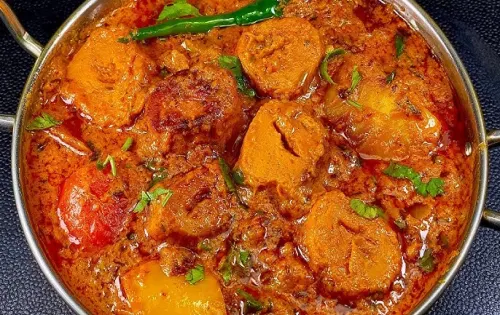Discover How Indian and Western Cuisines Complement Each Other
The realm of food is vast and rich, with tastes, textures, and smells varying across civilizations. Though their mix and fusion offer possibilities for wonderful combinations, Indian and Western cuisines, two of the most well-known culinary traditions, share certain qualities. Though different, these two cuisines go well together. This blog will look at how Indian and Western cuisines interact to provide creative meals, improve dining experiences, and provide something fresh for food lovers.
The Wealth of Indian Cuisine
Renowned for its wealthy flavors, aromatic spices, and complex education techniques, Indian meals are Most Indian food focused on spices, consisting of cumin, coriander, turmeric, and garam masala. These spices are firmly ingrained in India's cultural and recovery practices and decorate taste. Indian delicacies offer a brilliant variety of taste tales, beginning from creamy curries and tandoori meats to sharp chutneys and flatbreads like naan and roti.
Indian cuisine generally has layers that provide a wealthy combo of candy, sour, salty, and highly spiced additives.
The massive use of grains, legumes, veggies, dairy, and dairy products produces a vegetarian-pleasant menu that is both tasty and healthful.
The Subtlety of Western Cooking
Often described as having simpler, more direct tastes than Indian food, Western cuisine which includes a wide spectrum of European and North American culinary techniques is It usually stresses the quality and freshness of components above sophisticated seasoning. Often, Western cuisine emphasizes cheeses, breads, potatoes, and meats. Common cooking methods encompass grilling, roasting, and baking; many Western dishes are named for little seasoning, inclusive of salt, pepper, and herbs like rosemary and thyme.
Usually much less spicy than Indian cuisine, the dishes emphasize herbal tastes by means of meticulous cooking. Although conventional Western delicacies may also appear extra modest in evaluation, its splendor is within the purity of its additives and the accuracy with which they may be cooked.

Bridging the Gap: The Fusion of Indian and Western Cuisines
The magic arises when these two different cuisines collide. Indian spices may be a converting addition to Western meals, and vice versa. The active tastes of curry, cardamom, or cumin, for instance, can increase a fundamental roast chicken and offer a flavor explosion not normally visible in Western delicacies. Western cooking strategies like grilling can help to accentuate the natural traits of Indian meats at the same time, giving them a really smokey and charred finish whilst maintaining the conventional spice profile intact.
Fusion meals, which include fowl tikka burgers or curry pizza, are one manner those two culinary legacies engage.
The Indian spices provide the simplicity of the pizza or burger assertiveness and warmth, hence producing a unique taste profile that mixes the finest of both nations.
Another thrilling go-cultural invention is Indian-style pasta, which mixes standard Italian spaghetti with additives consisting of garam masala, paneer, and veggies like spinach or peas. The final result is a harmonic mix of Indian spice and Italian cooking methods.
Adding raita or using chickpeas, yogurt, and pickles helps Western salads as well; these ingredients bring creamy and sour qualities.
Discovering Fusion Cuisine: A Universe of Options
Fusion cuisine combining Indian and Western influences has infinite potential. Imagine, for example, a highly spiced dal paired with an aspect of crunchy fries or a buttery croissant stuffed with masala chook. Though they may seem odd at first, these pairings truly shine when the tastes are effectively balanced. While the crunchy fries offer a nice evaluation of the creamy texture of the dal, the buttery richness of the croissant offsets the masala's spiciness.
Western sweets like cakes and ice creams are also commonly improved in an equal manner with the use of Indian spices, inclusive of cardamom, saffron, and rose water. Adding cinnamon or nutmeg to a conventional Western dessert like chocolate mousse ought to offer a distinct twist that recollects the tastes of Indian candies without overpowering the delicacy.
The Increasing Popularity of Indian-Western Fusion in Restaurants
Restaurants throughout the world have begun to embrace Indian-Western fusion, which is producing interesting new menu choices. By combining both culinary heritages, chefs provide buyers with an innovative and uncommon ingesting experience that takes the quality elements of each sphere. Many locations have Western classics like steak or spaghetti served with an Indian twist, along with a facet of pickled greens or a yogurt-based sauce.
This combination also allows individuals to investigate various taste profiles free from the burden of unknown components. Fusing conventional Western methods with strong Indian tastes helps to smooth the shift from one cuisine to another, hence making Indian spices more accessible to people who could be unfamiliar with the food.
Conclusion
Ultimately, Indian and Western cuisines, while originating from very different cultural origins, complement one another in amazing ways. By their combination, fresh meals are produced that combine the strong, rich flavors of Indian food with the straightforward, clean tastes of Western cuisine. Sahota's Live Grill presents a wonderful chance to personally see this fusion by combining different gastronomic spheres in dynamic and delectable ways. The combination of these two distinct cooking traditions is a fantastic illustration of how food can cross cultural boundaries, hence producing creative and memorable dishes for everyone to enjoy.




Leave a Comment
Comments (0)